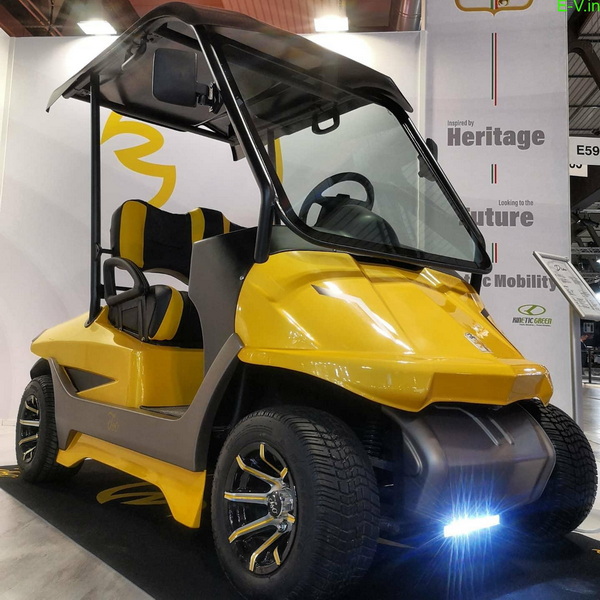Content Menu
● Understanding Electric Golf Carts
>> Battery Types and Their Impact on Range
>> Factors Affecting Range
>> Real-World Examples of Electric Golf Cart Ranges
>> Tips for Maximizing Your Electric Golf Cart's Range
>> The Future of Electric Golf Carts
>> Environmental Impact
>> Cost Considerations
>> Conclusion
● Frequently Asked Questions
>> 1. How can I increase the range of my electric golf cart?
>> 2. What is the average lifespan of an electric golf cart battery?
>> 3. Can I use my electric golf cart in the rain?
>> 4. How long does it take to charge an electric golf cart?
>> 5. Are electric golf carts suitable for off-road use?
Electric golf carts have become increasingly popular in recent years, not only on golf courses but also in residential communities, parks, and even for personal transportation. One of the most common questions potential buyers and users have is, "How far will an electric golf cart go on a single charge?" This article will explore the factors that influence the range of electric golf carts, the technology behind them, and practical tips for maximizing their distance.

Understanding Electric Golf Carts
Electric golf carts are powered by batteries, typically lead-acid or lithium-ion. These batteries store electrical energy, which is then used to power the electric motor that drives the cart. The range of an electric golf cart depends on several factors, including battery capacity, terrain, weight load, and driving habits.
Battery Types and Their Impact on Range
1. Lead-Acid Batteries: These are the traditional battery type used in many electric golf carts. They are generally less expensive but heavier and have a shorter lifespan compared to lithium-ion batteries. A typical lead-acid battery can provide a range of about 20 to 40 miles on a full charge, depending on the conditions.
2. Lithium-Ion Batteries: These batteries are becoming more common due to their lighter weight, longer lifespan, and better performance. A lithium-ion battery can offer a range of 40 to 100 miles on a single charge, making it a more efficient choice for those who need to travel longer distances.
Factors Affecting Range
Several factors can influence how far an electric golf cart can travel on a single charge:
1. Terrain: The type of terrain plays a significant role in determining the range. Flat surfaces allow for longer distances, while hilly or uneven terrain can drain the battery more quickly.
2. Weight Load: The total weight of the passengers and cargo affects the cart's efficiency. Heavier loads require more power, which can reduce the overall range.
3. Driving Habits: Aggressive driving, such as rapid acceleration and frequent braking, can deplete the battery faster. Smooth and steady driving can help maximize the distance traveled.
4. Weather Conditions: Extreme temperatures can impact battery performance. Cold weather can reduce battery efficiency, while hot weather can lead to overheating.
5. Battery Maintenance: Regular maintenance, such as keeping the battery charged and clean, can extend its lifespan and improve performance.
Real-World Examples of Electric Golf Cart Ranges
Many manufacturers provide specifications for their electric golf carts, indicating the expected range under optimal conditions. For instance, some popular models can achieve ranges of 30 to 50 miles with lead-acid batteries and up to 100 miles with lithium-ion batteries.

Tips for Maximizing Your Electric Golf Cart's Range
To get the most out of your electric golf cart, consider the following tips:
1. Plan Your Route: If you know you will be traveling a long distance, plan your route to avoid steep hills and rough terrain whenever possible.
2. Limit Weight: Try to minimize the number of passengers and cargo to reduce the overall weight of the cart.
3. Drive Smoothly: Avoid sudden starts and stops. Gradual acceleration and deceleration can help conserve battery power.
4. Keep Batteries Charged: Regularly charge your batteries and avoid letting them discharge completely, as this can shorten their lifespan.
5. Use Eco Mode: If your golf cart has an eco mode or energy-saving feature, use it to extend your range.
6. Regular Maintenance: Keep your cart in good condition with regular maintenance checks, including tire pressure and battery health.
The Future of Electric Golf Carts
As technology continues to advance, the future of electric golf carts looks promising. Manufacturers are investing in research and development to create more efficient batteries, improve motor technology, and enhance overall performance. Innovations such as regenerative braking systems, which recharge the battery while slowing down, are becoming more common. This technology not only extends the range but also contributes to a more sustainable mode of transportation.
Environmental Impact
Electric golf carts are often seen as a more environmentally friendly alternative to gas-powered carts. They produce zero emissions during operation, which is particularly beneficial in residential areas and golf courses where air quality is a concern. Additionally, as the grid becomes greener with more renewable energy sources, the overall carbon footprint of charging electric carts will continue to decrease.
Cost Considerations
When considering the purchase of an electric golf cart, it's essential to factor in the initial cost, maintenance, and operational expenses. While electric carts may have a higher upfront cost compared to gas-powered models, they often result in lower operating costs over time due to reduced fuel and maintenance expenses. Additionally, many communities offer incentives for using electric vehicles, which can help offset the initial investment.
Conclusion
In conclusion, the range of an electric golf cart can vary significantly based on several factors, including battery type, terrain, weight load, driving habits, and weather conditions. While lead-acid batteries typically offer a range of 20 to 40 miles, lithium-ion batteries can extend that range to 40 to 100 miles or more. By understanding these factors and implementing best practices for driving and maintenance, users can maximize the distance their electric golf cart can travel on a single charge.

Frequently Asked Questions
1. How can I increase the range of my electric golf cart?
To increase the range of your electric golf cart, plan your routes to avoid steep hills, minimize weight by limiting passengers and cargo, drive smoothly, and keep your batteries charged and well-maintained.
2. What is the average lifespan of an electric golf cart battery?
The average lifespan of a lead-acid battery is about 4 to 6 years, while lithium-ion batteries can last 7 to 10 years or more, depending on usage and maintenance.
3. Can I use my electric golf cart in the rain?
Most electric golf carts are designed to be weather-resistant, but it's best to avoid heavy rain and flooding. Always check the manufacturer's guidelines for specific recommendations regarding water exposure.
4. How long does it take to charge an electric golf cart?
Charging times can vary based on the battery type and charger used. Generally, it takes about 4 to 8 hours to fully charge a lead-acid battery and 2 to 4 hours for a lithium-ion battery.
5. Are electric golf carts suitable for off-road use?
While some electric golf carts are designed for off-road use, most are optimized for flat surfaces like golf courses and paved paths. If you plan to use your cart off-road, look for models specifically designed for that purpose.










































